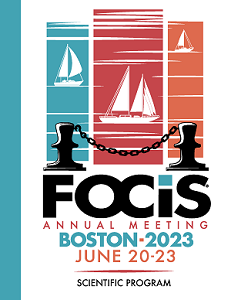Allergy
Session: Allergy and Autoantigens
Rhinovirus Infected Epithelial Cells Drive Genetic Susceptibility to Childhood-Onset Asthma
Thursday, June 22, 2023
5:15 PM - 5:30 PM
Location: Salon F-G
.jpg)
Daniela Fernandez-Salinas, BSc
Research Assistant
Boston Children's Hospital
Boston, Massachusetts, United States
Presenting Author(s)
Abstract Text: Asthma is a complex disease caused by genetic and environmental factors. Epidemiological studies show that rhinovirus (RV) infection in children, increases the risk of developing asthma. However, why only some individuals develop asthma remains an area of active investigation.
Genome-wide association studies (GWAS) have identified hundreds of genetic variants contributing to asthma susceptibility. While most genetic variants are non-coding and many affect gene regulation in T cells, a role for airway epithelial cells (AECs) in mediating genetic susceptibility to asthma remains under-studied. Here we hypothesized that gene by environment interactions occurring in AEC could play an important role in asthma development. We compiled transcriptomic (bulk and single-cell RNA-seq) and epigenomic datasets of AECs subjected to different stimuli. We applied methods that use GWAS data to characterize AEC states that mediate asthma genetic risk: single-cell disease-relevance score (scDRS) and Linkage Disequilibrium Score-regression in Specifically Expressed Genes (LDSC-seg).
First, using immune cell datasets we validated that T cells mediate significant genetic susceptibility to adult-onset and childhood-onset asthma, with a distinct signal for Th2. Then, we found that AECs infected with RV significantly mediate genetic susceptibility to childhood-onset asthma. In contrast, Sars-Cov2-infected or cytokine-stimulated AECs do not. Furthermore, the RV-specific signal was exclusive to later points of infection (24-42 hours post-infection). Additionally, we found that RV-infected AECs from asthmatic patients showed a stronger enrichment for asthma risk compared to those of healthy individuals. Our results indicate that rhinovirus infection combined with a high genetic burden increases the risk of asthma development via AECs.
Genome-wide association studies (GWAS) have identified hundreds of genetic variants contributing to asthma susceptibility. While most genetic variants are non-coding and many affect gene regulation in T cells, a role for airway epithelial cells (AECs) in mediating genetic susceptibility to asthma remains under-studied. Here we hypothesized that gene by environment interactions occurring in AEC could play an important role in asthma development. We compiled transcriptomic (bulk and single-cell RNA-seq) and epigenomic datasets of AECs subjected to different stimuli. We applied methods that use GWAS data to characterize AEC states that mediate asthma genetic risk: single-cell disease-relevance score (scDRS) and Linkage Disequilibrium Score-regression in Specifically Expressed Genes (LDSC-seg).
First, using immune cell datasets we validated that T cells mediate significant genetic susceptibility to adult-onset and childhood-onset asthma, with a distinct signal for Th2. Then, we found that AECs infected with RV significantly mediate genetic susceptibility to childhood-onset asthma. In contrast, Sars-Cov2-infected or cytokine-stimulated AECs do not. Furthermore, the RV-specific signal was exclusive to later points of infection (24-42 hours post-infection). Additionally, we found that RV-infected AECs from asthmatic patients showed a stronger enrichment for asthma risk compared to those of healthy individuals. Our results indicate that rhinovirus infection combined with a high genetic burden increases the risk of asthma development via AECs.

